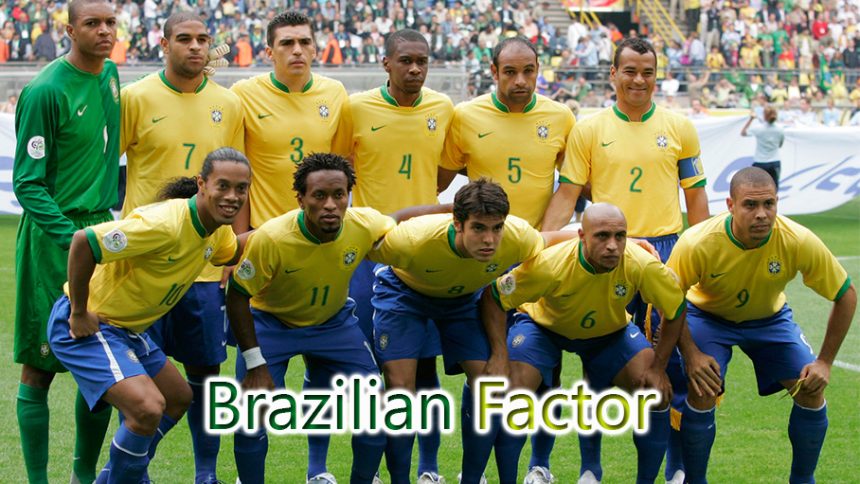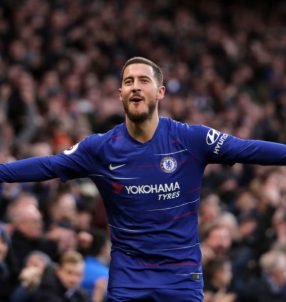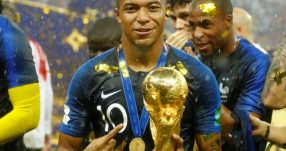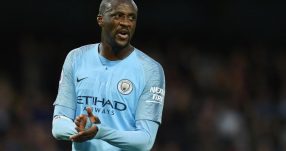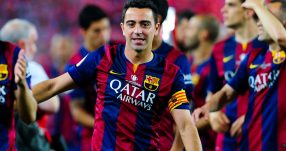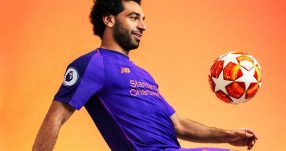(Image credit: Archivafutbol)
We’ve all seen this countless times! The Brazilian players are the ones best known for their exquisite flair and natural ability for delivering acrobatic-like performances with the ball. They first gain media attention in their native Brazil where they showcase rare talent and effortlessly score tons of goals past opposing defenders. The next step in their career involves them making a switch to a big European side, where they can compete for the biggest trophies. Normally, they experience a meteoric rise on the European stage, which translates to an almost vertical line on their personal development graph charts. Their great form lasts for a few seasons, but soon after achieving superstardom away from home they immediately plummet from the skies – a fact that I took the liberty to refer to as the “Brazilian factor.” It’s almost as if their talents have been taken away from them by aliens (we’ve seen this sort of thing happen with NBA stars in “Space Jam.”)
Let’s take a look at some of the well-known stars that have suffered from the Brazilian factor in their careers, and we’ll also explore whether Neymar will succumb to the same fate.
Adriano
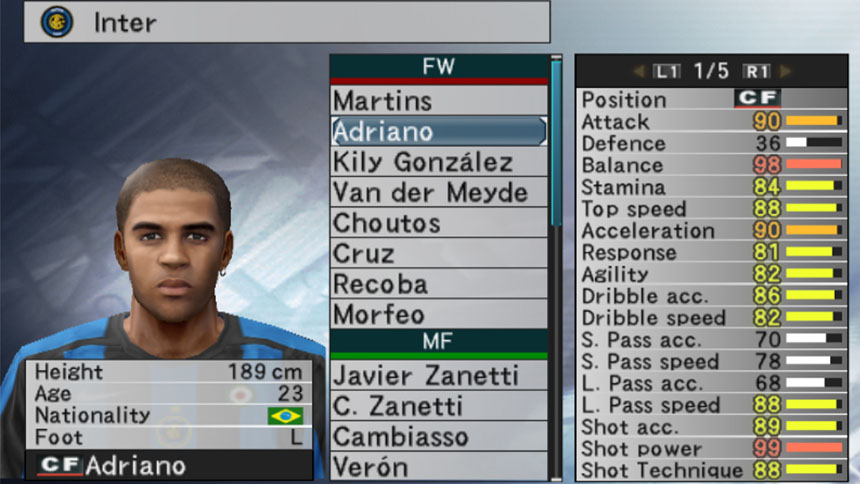
(Image credit: Balls)
Just like all Brazilian stars, Adriano Leite Ribeiro made news while still in his teens. During the 2000 season, he scored a solid 11 goals across all competitions for his local team Flamengo. Italian giants Internazionale quickly snapped him up, but was soon sent on loan with Fiorentina and later made a permanent switch to Parma. He later came back to Inter, and became a serious threat in front of goal, notching 16 in Serie A and 28 overall for the 2004-05 season. The following year was also pretty good with 19 goals in all competitions, however that’s when his form started to decline. ESPN reported he was sent to his homeland in efforts to regain his fitness, but he never managed to get the spark back. It is believed he struggled with alcoholism, which, if true, obviously didn’t help his career.
(I still have fond memories of Adriano; he was the player with the strongest shot on Pro Evo Soccer 4, 5 and 6.)
Kaka
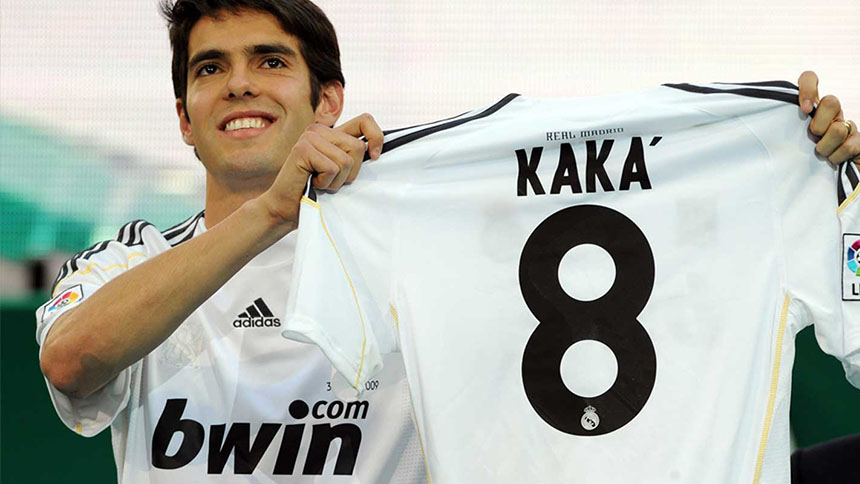
(Image credit: StyleEquation)
Ricardo Izecson dos Santos Leite, or more commonly referred to as Kaka, made his start in the game with Sao Paulo. Even before he hit his 20s, Kaka notched 17 goals in all competitions from the midfield position in the 2001 season, while the following year proved even better with 23 goals in total. No one thought he would ever fall victim to the Brazilian factor, but in the end that turned out to be the case. In 2003, AC Milan signed him for a mere €8.5 million, which propelled the Rossoneri owner Silvio Berlusconi to describe the fee as “peanuts,” according to The Sydney Morning Herald.
After a few seasons he became the focal point within the team, and thanks to his impressive performances AC Milan lifted the Champions League trophy in 2007. He won the Ballon d’Or for that year, and in 2009 left for pasture new with Real Madrid. Unfortunately, the move to Los Blancos paved the way for downfall, as he never hit the same heights as he did while playing for Milan. Often struggling with injuries and form, Kaka’s level of consistency was shattered which rendered him unable to perform miracles with the ball.
Pato
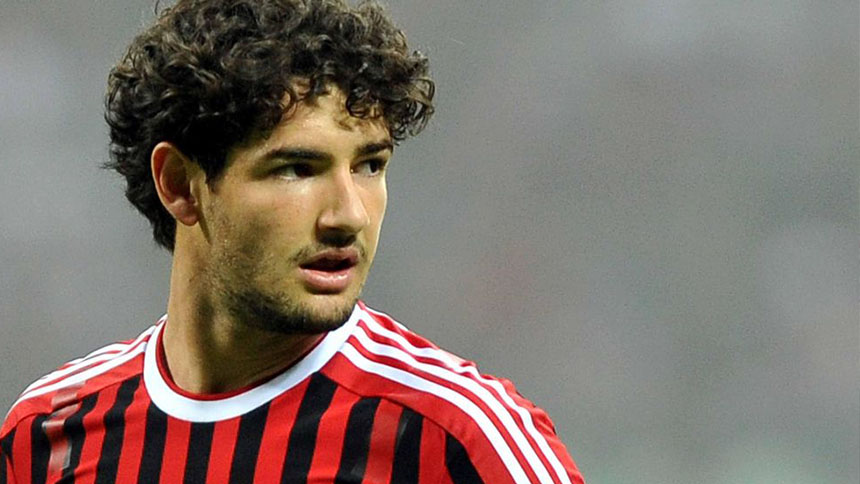
(Image credit: ManUnited Zone)
Pato (real name: Alexandre Rodrigues da Silva) first gained attention in 2007, when he scored 10 goals in the season while still a teenager. AC Milan jumped on the opportunity to sign him that year, a transfer deal that cost them around €20 million. However, due to FIFA rules regarding non-EU minors, he was unable to play for the Rossoneri until January 2008. He hit the ground running in his first half-season, and he really flourished in the 2008-09 season, finding the back of the net 18 times across all competitions. Considering he was still in his teens, those were some impressive numbers. In the next two years he added 30 more goals to his tally, however he constantly suffered injuries which put him out of some crucial games.
In early 2013 he decided to go back home to Brazil, where he aimed to rebuild his career with Corinthians. In his first season on home soil, he found the back of the 17 times, which indicated a great return to form. Shortly afterwards, he was loaned out to Sao Paulo until December 2015, which saw him clinch 38 goals in total over two seasons. If he continues producing fine performances, he may regain some of the spark that made him popular in the first place.
Robinho
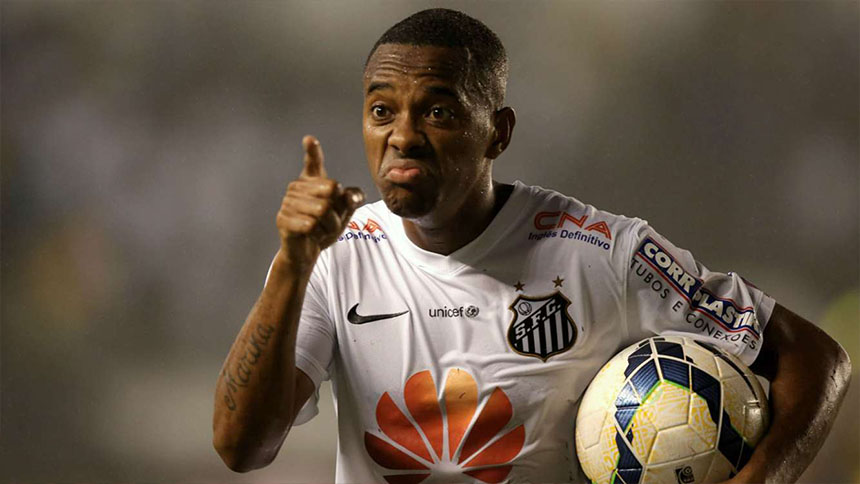
(Image credit: Sportal)
Robinho burst onto the scene as an 18-year-old wonderkid in 2002, when he scored 10 goals in his first full season. He continued developing at a fast pace, which saw him bag 15 goals in the following year and another 32 in the 2004 season. He scored another 24 goals halfway through 2005 before Real Madrid signed him. His first season with Los Blancos saw him go through an adjustment period in which he found the back of the net 8 times in La Liga and another 4 in the Spanish Cup. Robinho was touted as the next big star, with some outlets proclaiming him the next Pele. In his last two seasons with Madrid he managed only 23 goals, which is light years away from what was originally expected from him. This was the first indication that he may be suffering from the Brazilian factor. After transferring to Manchester City for a whopping €42.5 million (£32.5 million) according to BBC Sport, there were glimpses of his previous greatness, however he never replicated the same form that he showcased while in Brazil.
Ronaldo
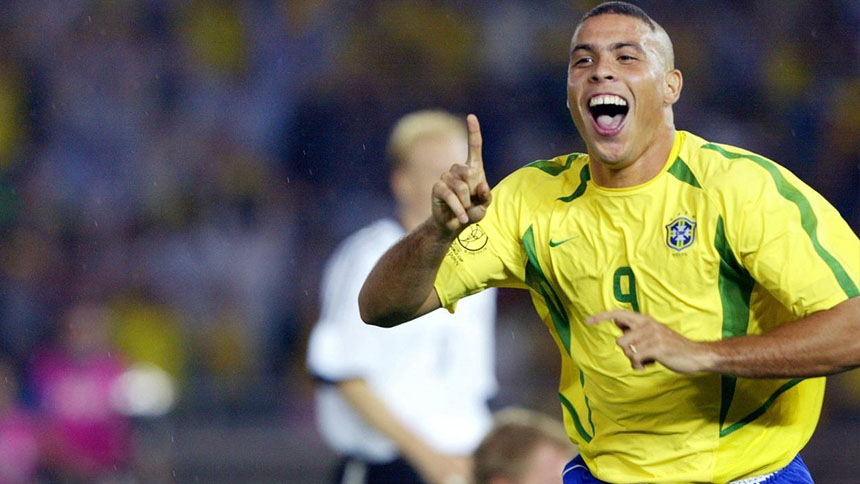
(Image credit: Footie)
Ronaldo Luis Nazario de Lima, dubbed Il Fenomeno, was a true wonderkid, scoring 20 goals per season with Cruzeiro before he hit his 20s. When he transferred to Europe, he didn’t struggle with a new culture and style of playing. Instead, in his first season with PSV he notched a cool 35 goals in all competitions. After adding another 19 the following year, he was snapped up by Catalan giants Barcelona, where he enjoyed massive success, scoring 47 goals in 49 appearances.
Disputes with the club’s chiefs regarding his contract saw him leave the shores of Catalonia for Italy, with Inter becoming his new home. His first two seasons were once again great, however in the third year he suffered a knee injury that saw him sidelined for the entire 2000-01 season. He made sporadic appearances in 2001-02, but made history with the national side during the 2002 World Cup as they clinching the trophy for the fifth time.
Real’s president Florentino Perez quickly signed him as the latest Galactico, and he showed his greatness during the first three years. But then he struck a bad run and lost form, which saw him move to AC Milan half way through the 2006-07 campaign. After failing to make an impact with the Rossoneri, he returned home where he played his final days with Corinthians, finally ending his career in early 2011. It’s fair to say that the Brazilian factor didn’t avoid him in his latter years.
Ronaldinho
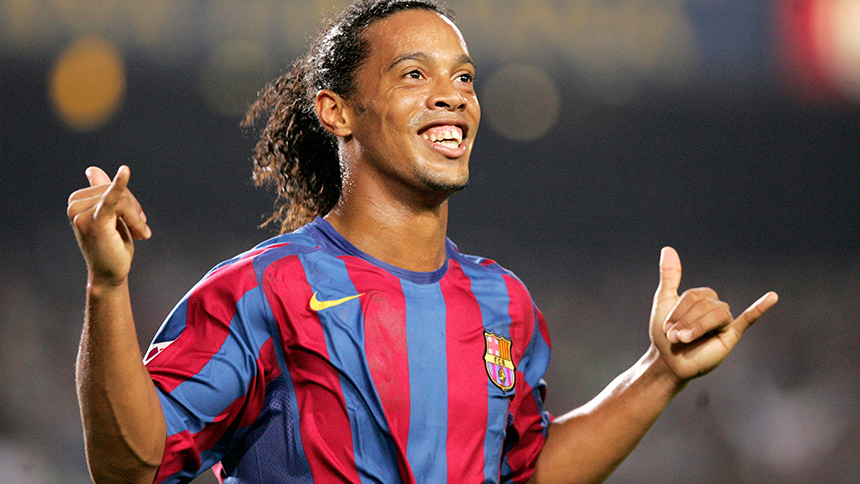
(Image credit: FC Barcelona)
Ronaldinho in his prime was the ultimate entertainer in football. There was a time when the iconic player was regarded by everyone, including the opposition supporters, the greatest football talent in the world. There was virtually no match to the way he played with the ball. For many it seemed that he treated football more like a game rather than a sports profession. Everything he did was so natural, making it look as if anyone could do what he did.
He transferred from PSG to Barcelona in 2003 for a fee rumoured to be around €30 million, and that’s the place where he made his name. There was no transition period necessary, as the numbers started rolling in almost instantly. But the most captivating thing about Ronaldinho weren’t the numbers of assists and goals, but rather the way he did those things. He was the classical Brazilian player in his prime, full of tricks and dribbles, and there were no equals. Watching him as a young fan on TV, I always made sure to have popcorn beside me; it was like watching an action-packed blockbuster!
But just like the rest of them, Ronaldinho wasn’t immune to the Brazilian factor. He achieved tremendous success with Barcelona, with the pinnacle coming after they clinched the double in 2006 – La Liga and Champions League titles. He continued with some decent performances next season, however it seemed to many that he lost the Midas touch. Sadly, his curve went down almost instantly after reaching the status of Football God.
Neymar?
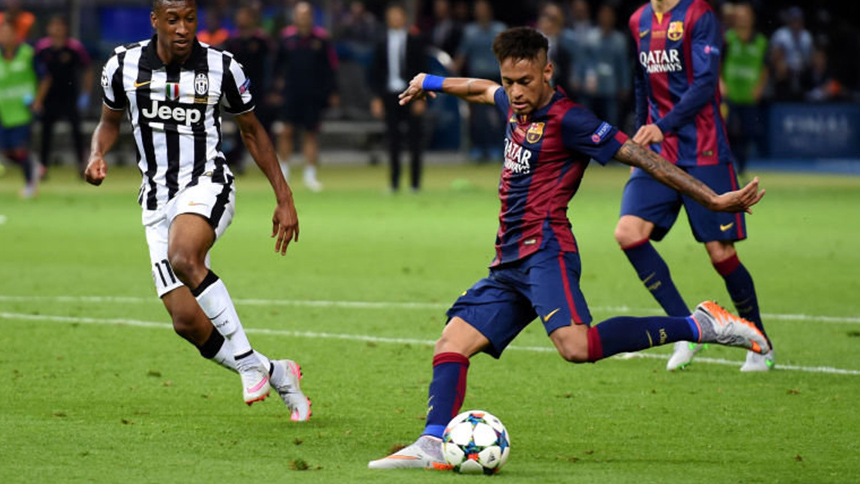
(Image credit: Sky Sports)
And now you’re probably wondering if Neymar will go down the same path. We can’t know at this moment since he’s firing on all cylinders; his curve trajectory is looking pretty impressive now. He scored a whopping 39 goals in all competitions in his second season with Barcelona, and there are no signs of him slowing down. Once Messi steps down from the throne as the world’s best player, the media is convinced Neymar will claim the Ballon d’Or for himself, several times over. But we’ll have to wait to see if that really happens.
All other Brazilian stars succumbed to the Brazilian factor, but the 23-year-old can become an even bigger deal if he manages to avoid injuries and stay hungry for more success.
About the author
Mark-Antonio Zivic
Mark-Antonio Zivic used to be a professional footballer that won a record six Champions League medals... but decided to quit the game in his prime, believing he was better than both Ronaldo and Messi. Now he spends his time brainstorming ideas for Betting Herald, before he ventures into Hollywood movies, rubbing shoulders with Daniel Day-Lewis and Sofia Vergara.
Hot Topics
Photo courtesy: 101 Great Goals Eden Hazard has virtually sealed his fate post-Europa League final, which will likely be his last game for Chelsea. Chelsea can still win one last trophy with Hazard in their squad Real Madrid manager Zinedine Zidane has always been a vocal admirer of Eden Hazard.…


